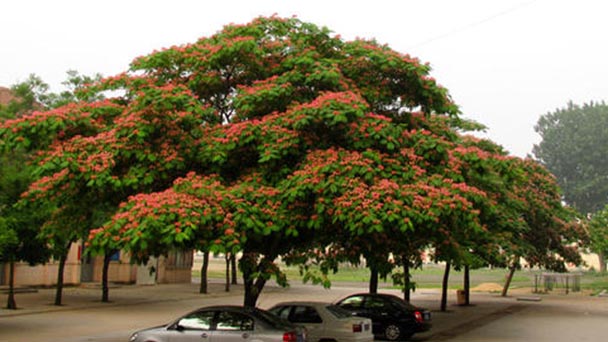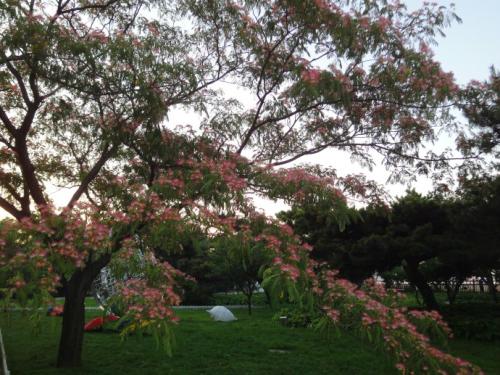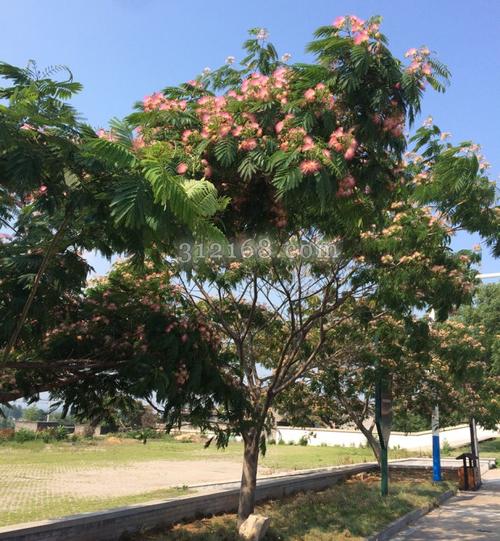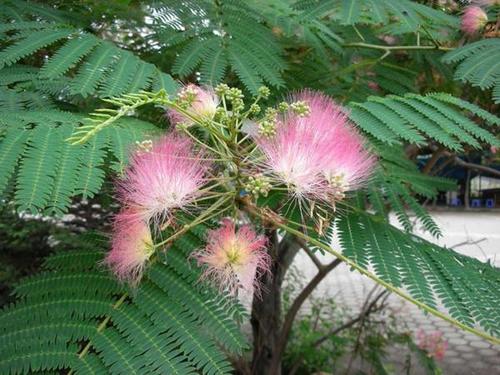Persian silk tree profile
Written by Maggie
Dec 23 2020

Albizia julibrissin, the Persian silk tree or pink silk tree, is a species of tree in the family Fabaceae, native to southwestern and eastern Asia. There are onlyPersian silk trees in the Country that are light, dry and poor. Persian silk tree has reddish-brown wood, straight grain, fine structure, easy to crack when dry, and can make furniture, sleepers and so on. The bark is extracts.There are only Persian silk trees in the Country that are typically in China, Japan, South Korea, or North Korea.
Persian Silk Tree picture

Persian Silk Tree morphological characteristics
In the persian silk tree, there are deciduous trees up to 16 million tall. The trunk is gray-black; Shoots, inflorescence, and leaf shafts are tomentose or pubescent.
Stipules are linear-lanceolate, smaller than leaflets, early deciduous; Secondary pinnate compound leaves are alternate; The total petiole was 3-5cm long, and there was one gland near the base of the petiole and one pair of pinnules at the top of the petiole. The persian silk tree pinnate has 4-12 pairs, sometimes up to 20 pairs cultivated; Leaflets have 10-30 pairs, linear to oblong, 6-12mm long, 1-4mm wide, upward oblique, apex small pointed, ciliate, sometimes pubescent below or only on midvein; The midrib abuts on the upper margin.
Inflorescences in heads arranged in panicles; Persian silk tree pollen is red; The calyx is tubular, 3mm long; The corolla is 8mm long, lobes triangular, 1.5mm long, calyx, corolla were pubescent; Stamens are numerous, base connate, filaments slender; Persian silk tree ovary is superior, style several as long as filaments, stigma cylindrical.
Pods are banded, 9 -- 15cm long, 1.5 -- 2.5cm wide, tender pods pilose, older pods glabrous. Flowering period: June to July; Fruit period August - October.
Persian Silk tree growth behavior
Persian Silk tree is found on slopes or in cultivation. Persian Silk trees are typically warm, moist and sunny, climate and soil resilient, growing in well drained, fertile soils, but tolerant of poor soil fertility and dry climates, but not of flood. It grows fast.
Persian Silk Tree is typically warm, hardy, dry, barren soil, and mildly saline, and is resistant to sulfur dioxide, hydrogen chloride and other harmful gases.
Persian Silk Tree geographical distribution
Persian Silk Tree is found in east, South and southwest China, across the Yellow River in China and the Pearl River in Liaoning, Hebei, Henan, and Shaanxi provinces. Persian silk tree is also distributed in North Korea, Japan, Vietnam, Thailand, Myanmar, India, Iran, East Africa and South America, central Asia to East Asia.

Persian Silk Tree main value
Medicinal value
Persian silk tree flowers contain glucosinolate, tannin, relieve depression, appetizers, and relieve pain, used in the Passage for agitation, depression, and insomnia. It can cure Knot chest frowsty, insomnia, forgetfulness, wind fire eye, can settle the five viscera, and the heart. Is also the treatment of neurasthenia.
Ornamental value
Persian Silk Tree is used as a garden tree, street tree, landscape tree, waterfront tree, factory tree, and conservation tree.
Persian Silk Tree Propagation methods
Throughout the Persian Silk Tree propagation, seeds are harvested between September and October, using plump, disease-free pods that are dried and purged in dry ventilation to prevent mold growth.
Raise seedlings in spring, soak seeds for 8-10h before sowing and then take them out for sowing. Furrow sowing was carried out, the furrow spacing was 60cm, and the soil was covered by 2-3cm. After sowing, the bed soil was kept moist and germinated for about 10d. The seeding capacity of 1h㎡ is about 150kg. The management of weeding, weeding and topdressing should be strengthened after seedling emergence. In the 2nd year, plant at 3-5m apart in spring or autumn. Weeding pine nests every spring and autumn for 2-3 years after transplanting to promote growth.
Seed treatment
There are Only Persian silk trees seeds available in March and April of the following year. In order to ensure smooth germination and quick release of seeds in Persian silk trees, the seeds were immersed in 0.5% potassium permanganate in cold water for 2h 2 weeks in the first 2 weeks of distribution. After extraction, the seeds were washed in clear water and soaked in hot water around 80℃ for 30s (up to 1min, otherwise the germination rate would be affected) and seeded in 24h. Using this method to accelerate the germination rate can be up to 80%-90%, and the seedlings after robust growth are not easy to come on.

Latest Updated
- Benefits of Bugleweed - 7 Science-backed Health Benefits
- Bugleweed Dangers & Side Effects - Is It Poisonous?
- How to Plant Evergreen Trees - What You Should Know
- When to Plant Evergreens - Grow Guide for Evergreen Trees
- 12 Wonderful Evergreen Shrubs for Your Garden
- 12 Popular Evergreen Plants with Pictures for Beginners
- When And How To Prune A Lilac Bush Like a Pro
- How to Grow & Care for Lilac Vine (Hardenbergia Violacea)
- Japanese Lilac Tree (Syringa Reticulata) Care & Propagation Guide
- Shumard Oak Pros and Cons - What to Know
Popular Articles
- Winter maintenance of Antirrhinum Majus
- How to Grow Terminalia Mantaly Tree
- How to Grow and Care for Crossostephium Chinense
- How to grow Antirrhinum Majus in spring
- Peristeria Elata (Dove Orchid) Profile: Info & Care Guide
- Underwatered Snake Plant (Sansevieria Trifasciata) - Signs And How To Fix
- How to Care for Brazilian Jasmine Plant (Mandevilla Sanderi)
- How to Grow & Care for Graptopetalum Purple Delight in Summer
- Rosa Chinensis (China Rose): Plant Growing & Care Tips
- How to Care for Baby Sun Rose (Aptenia Cordifolia)